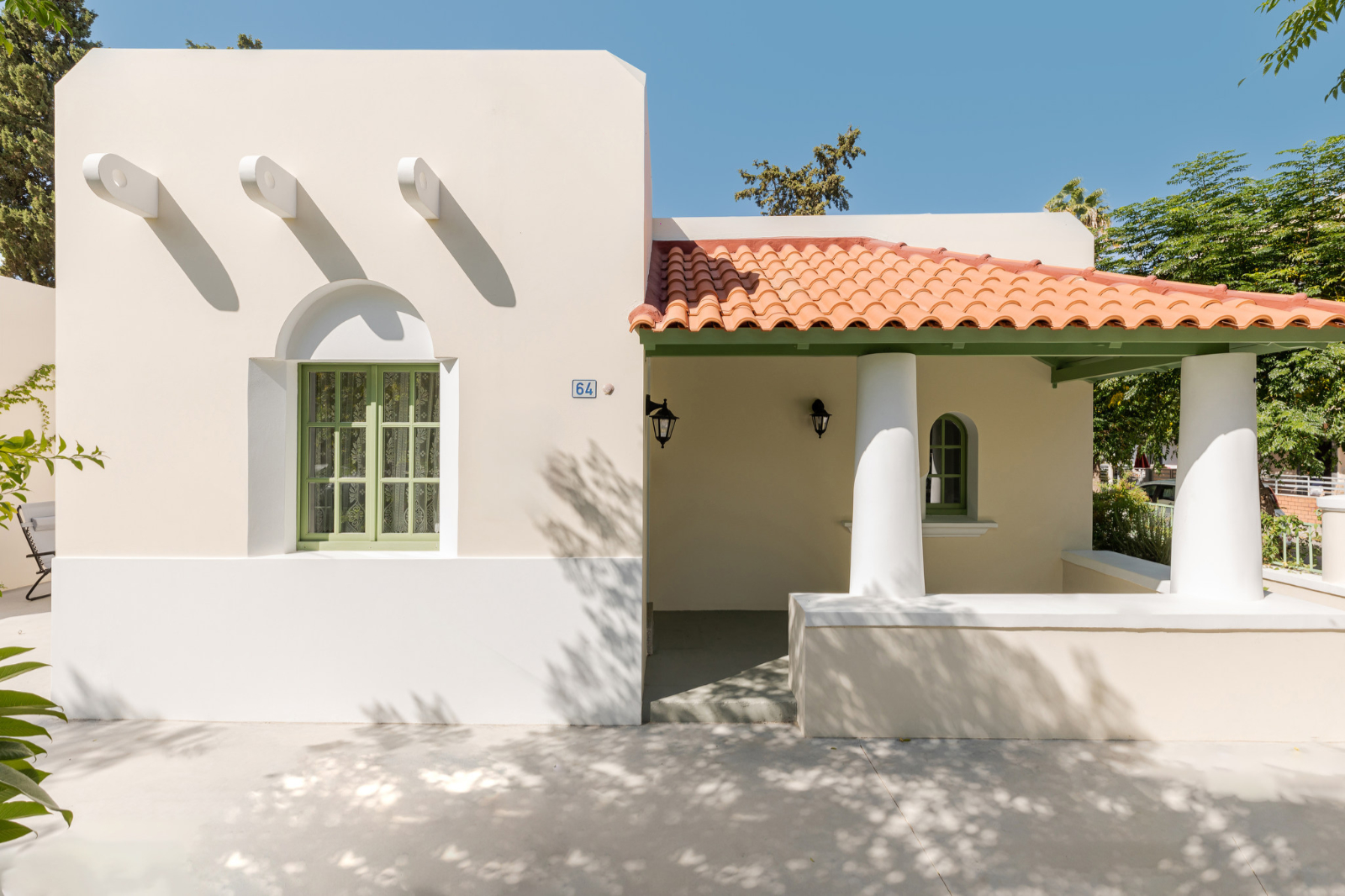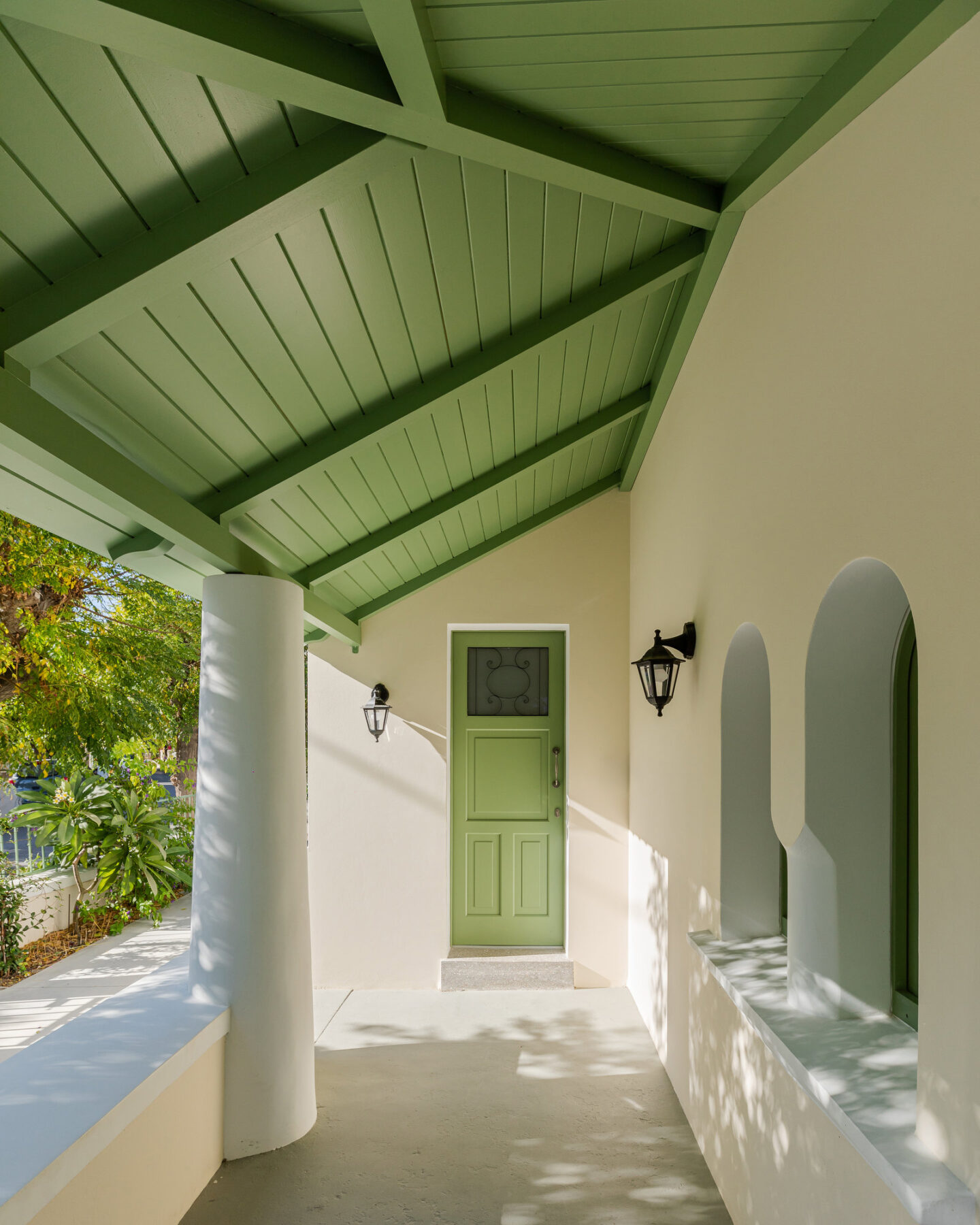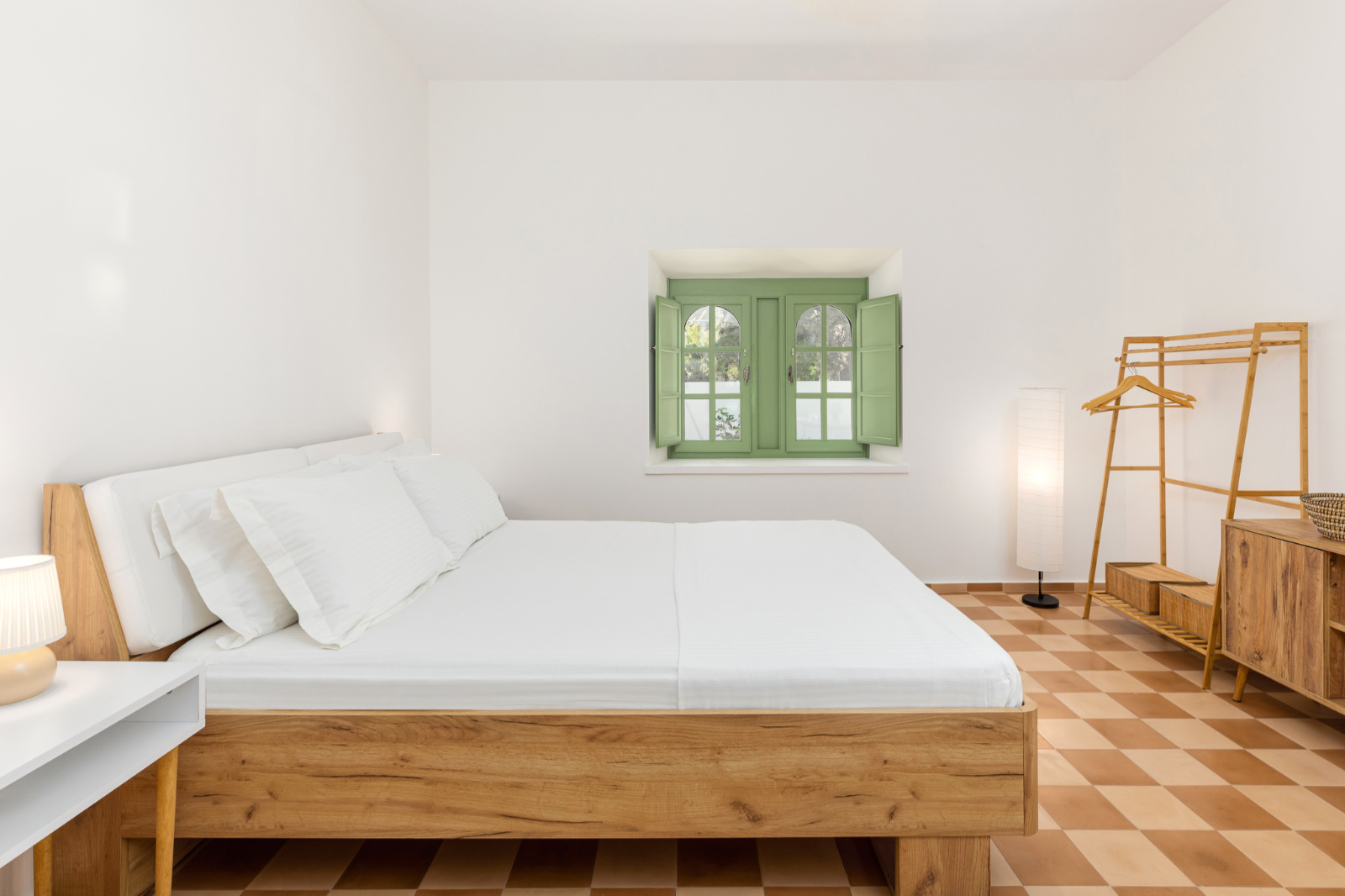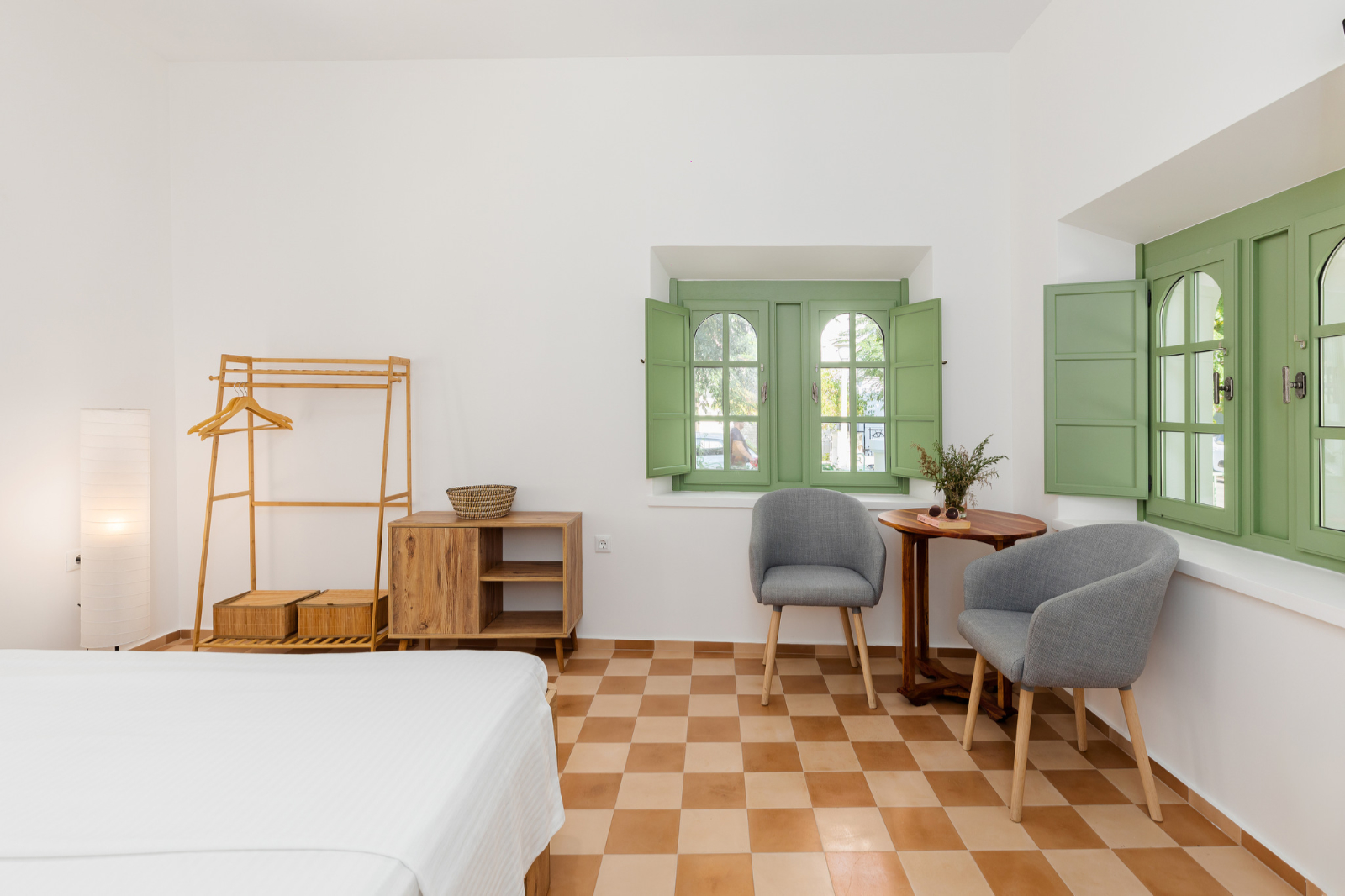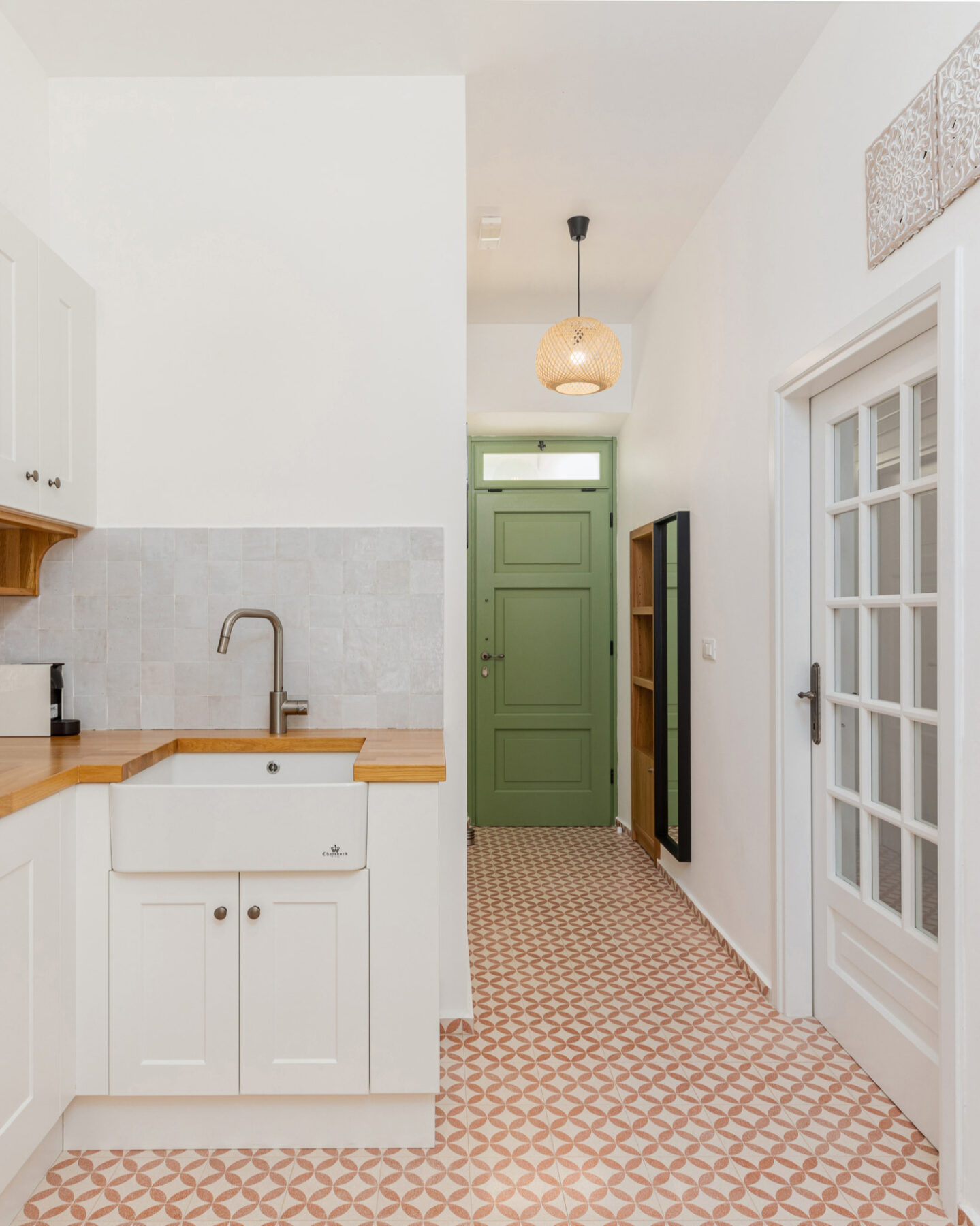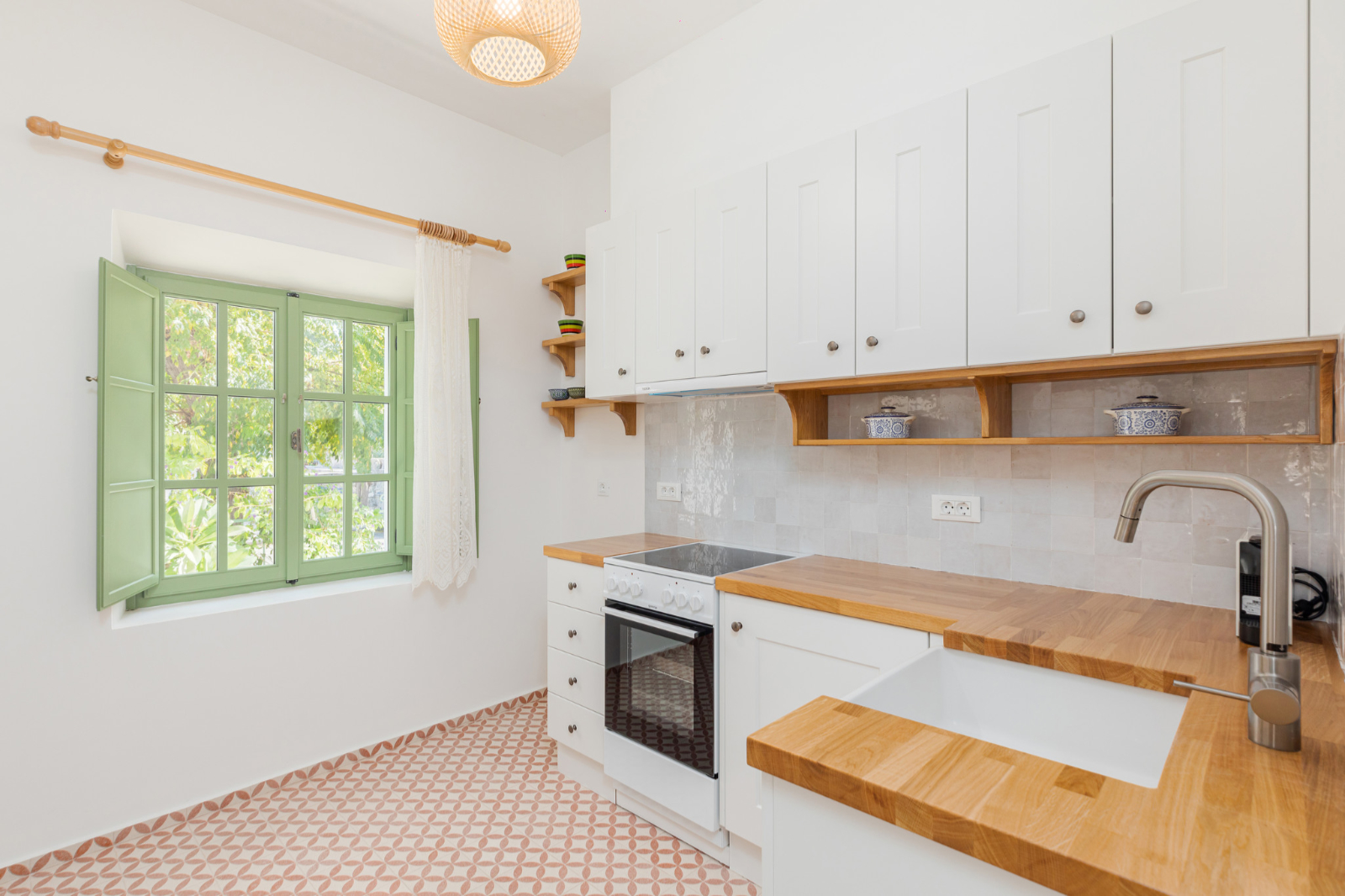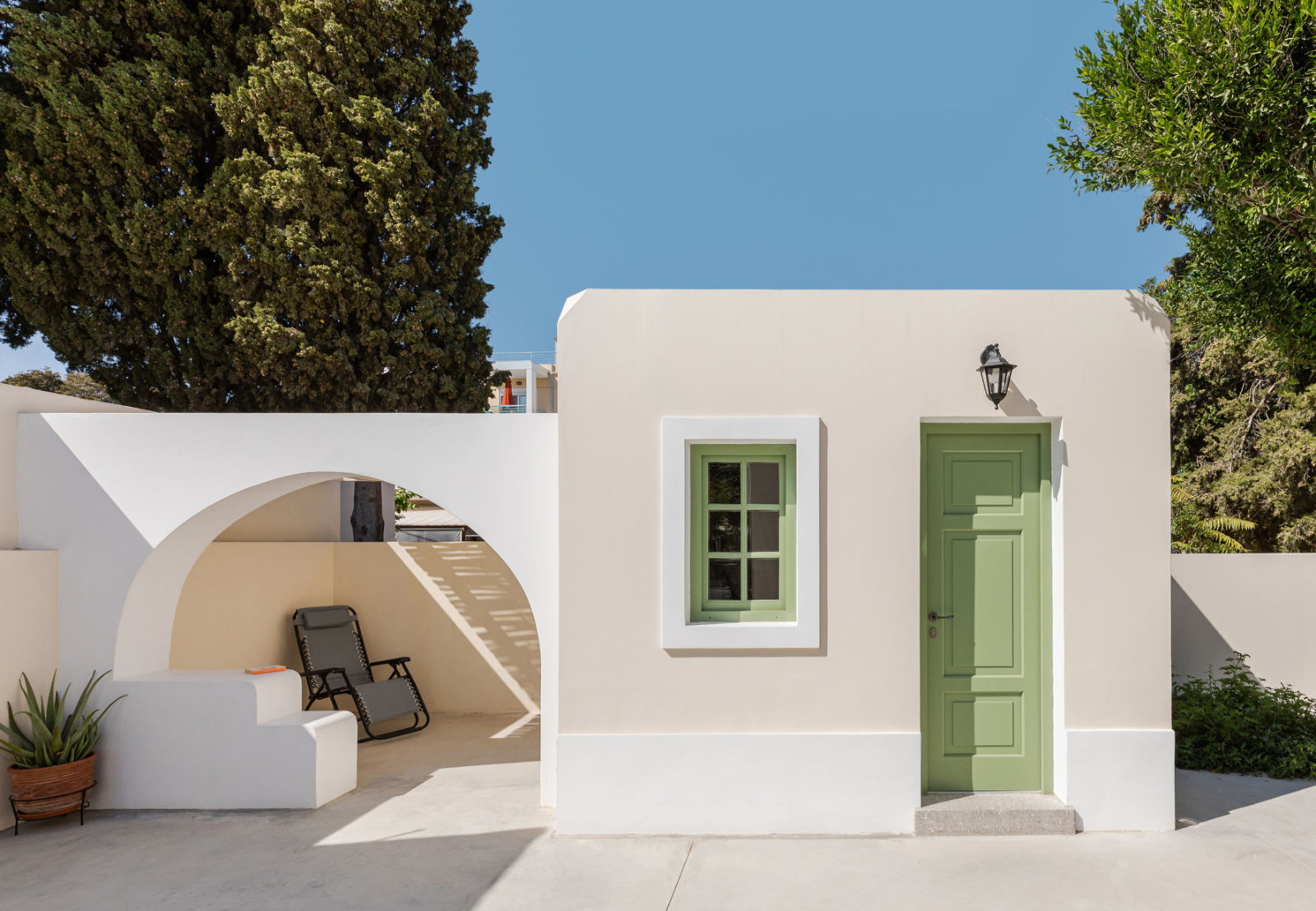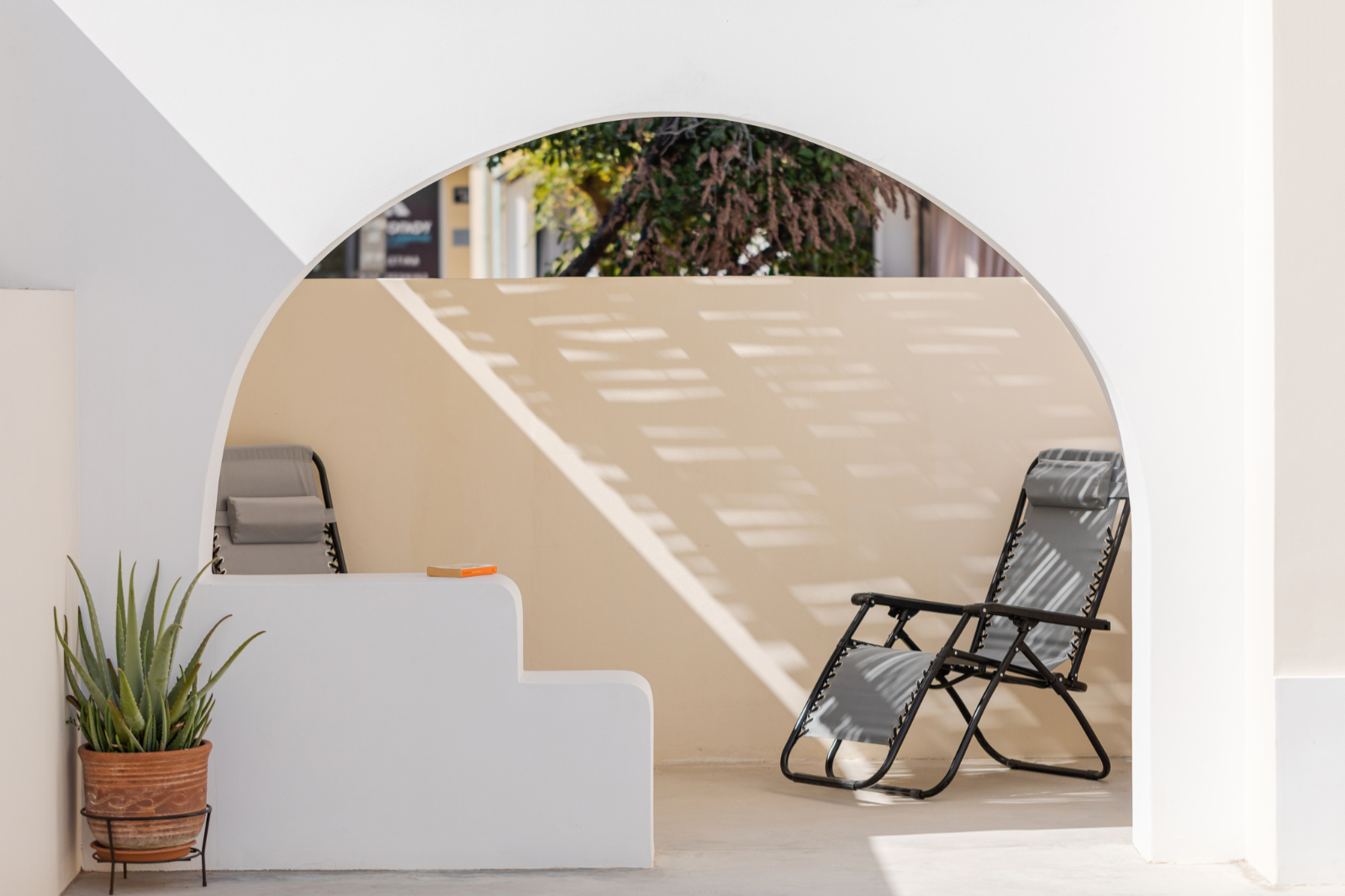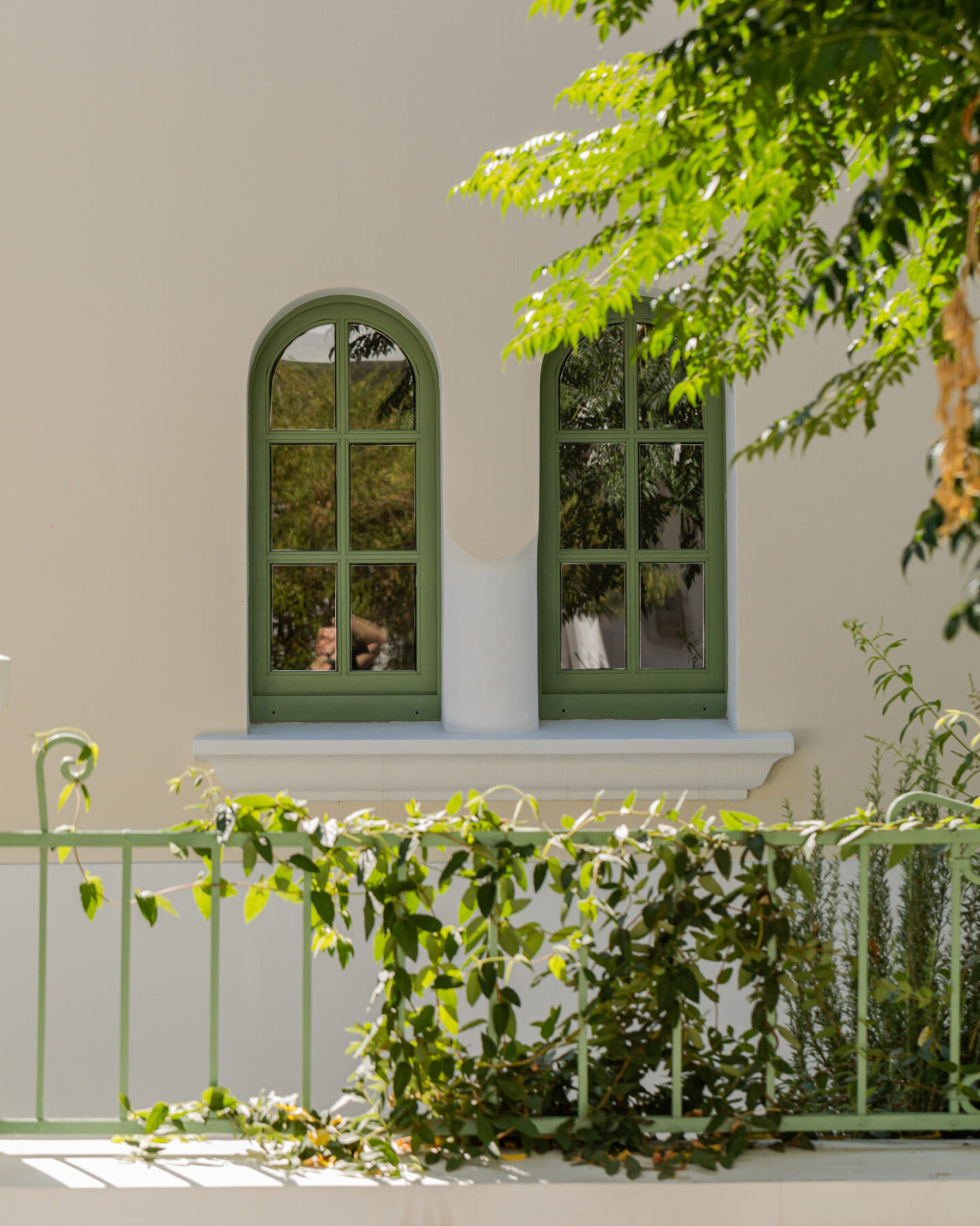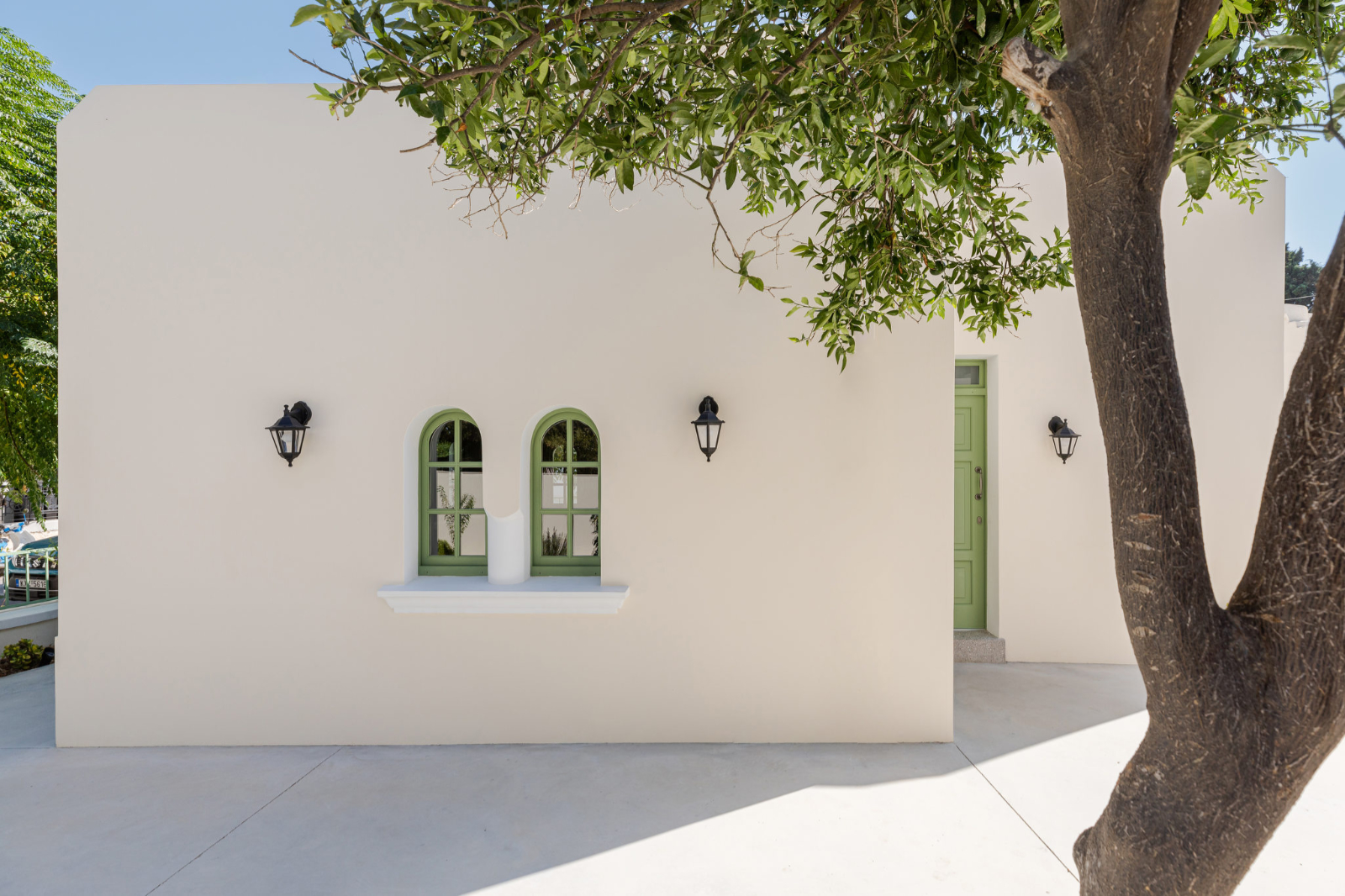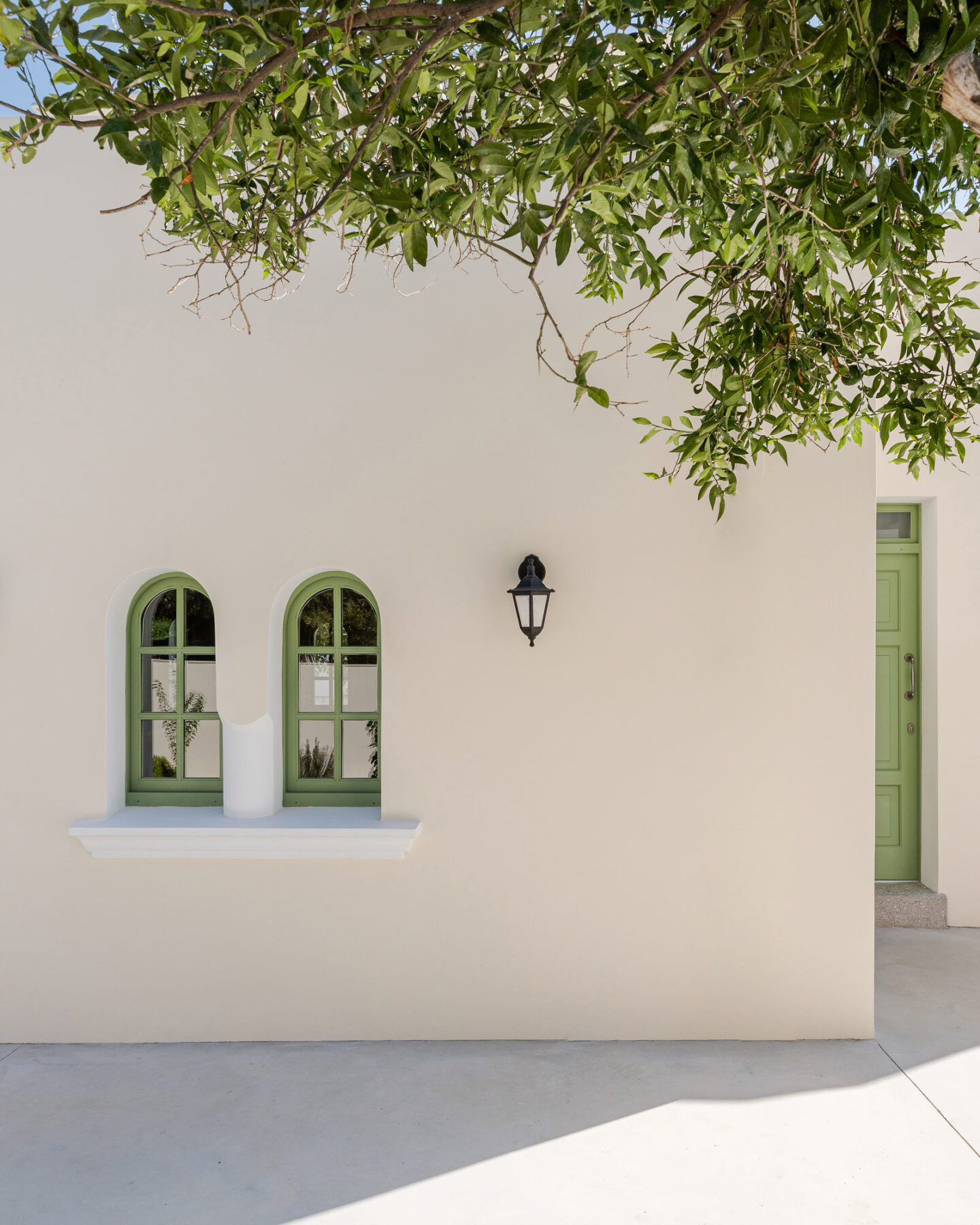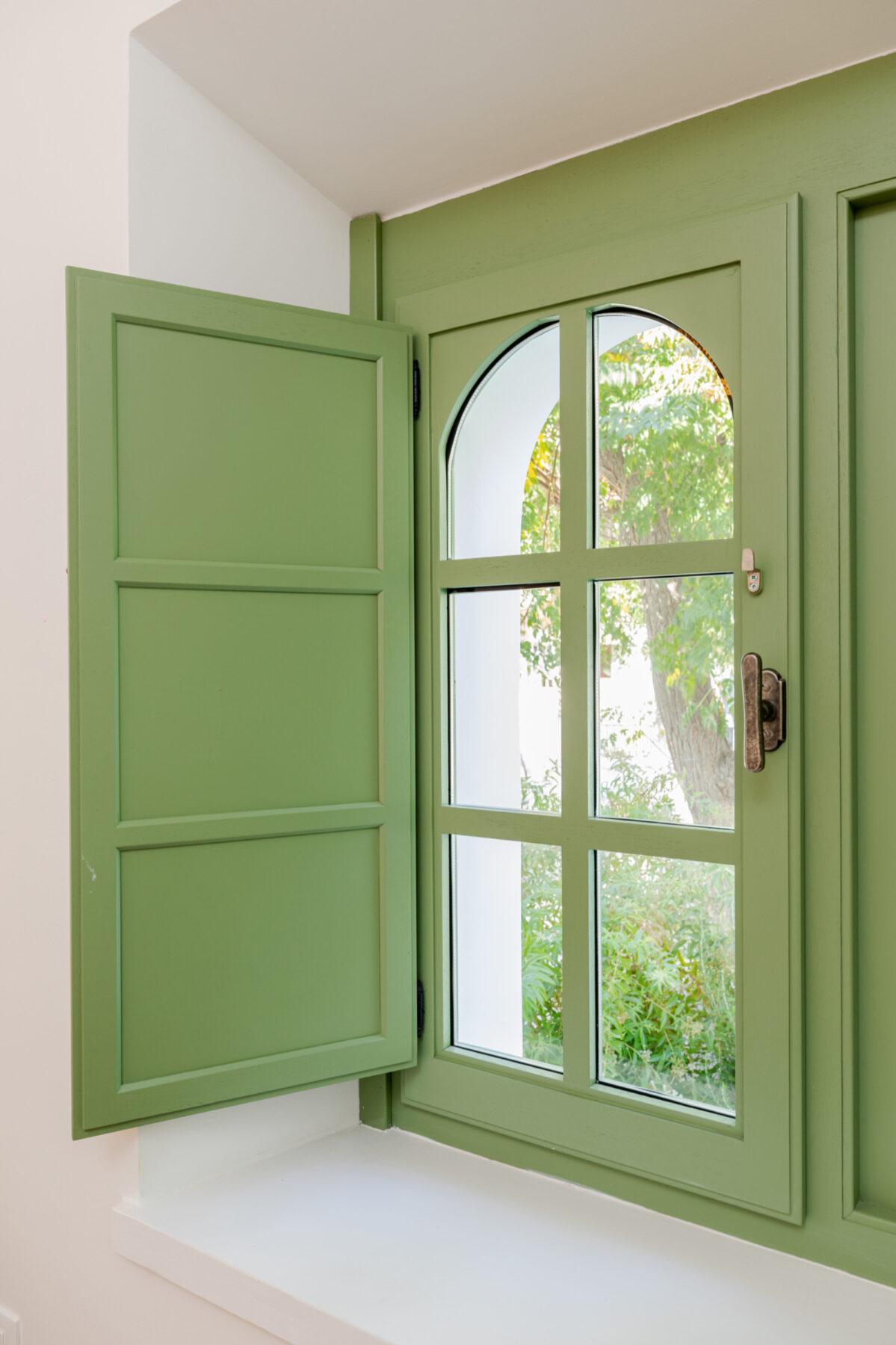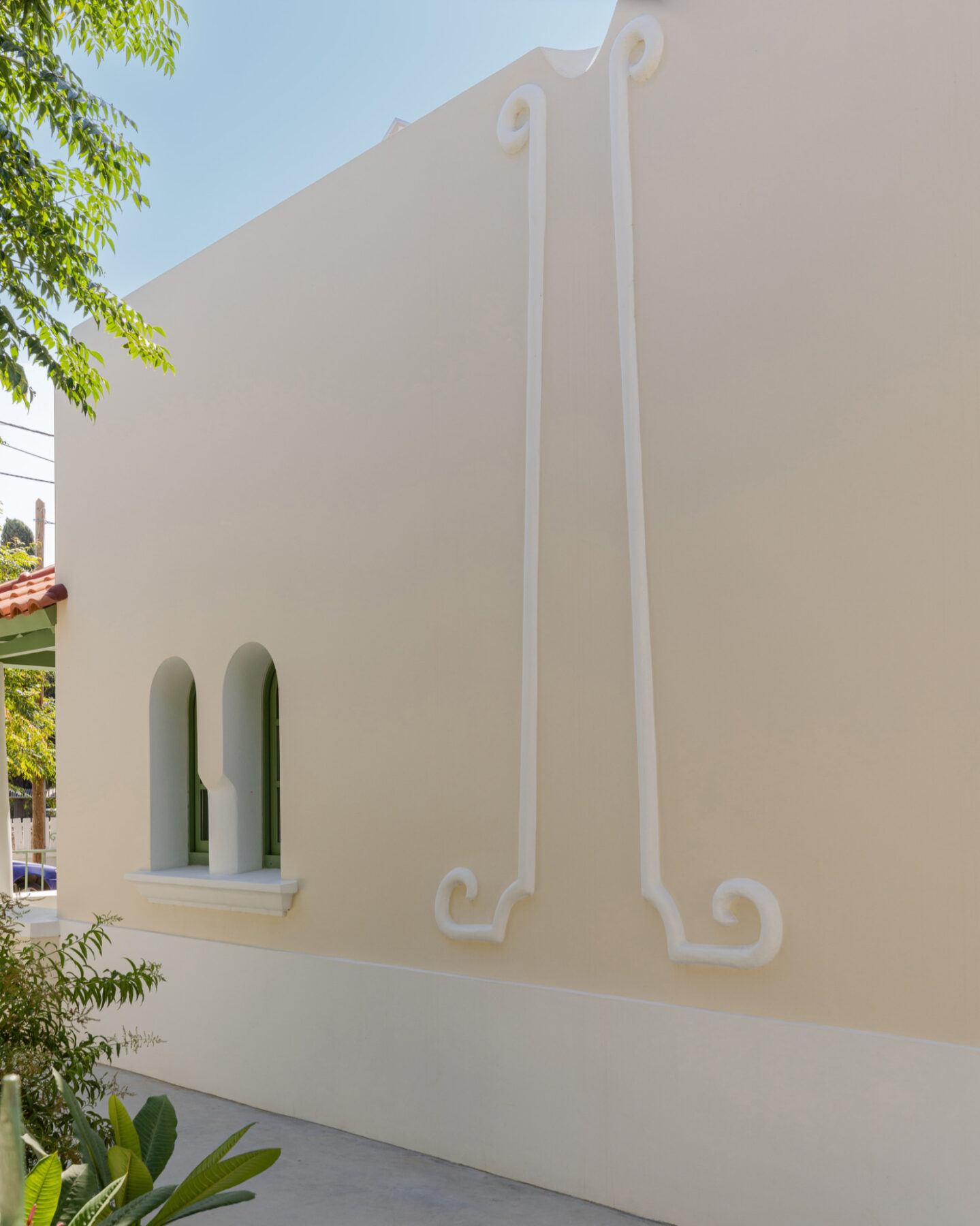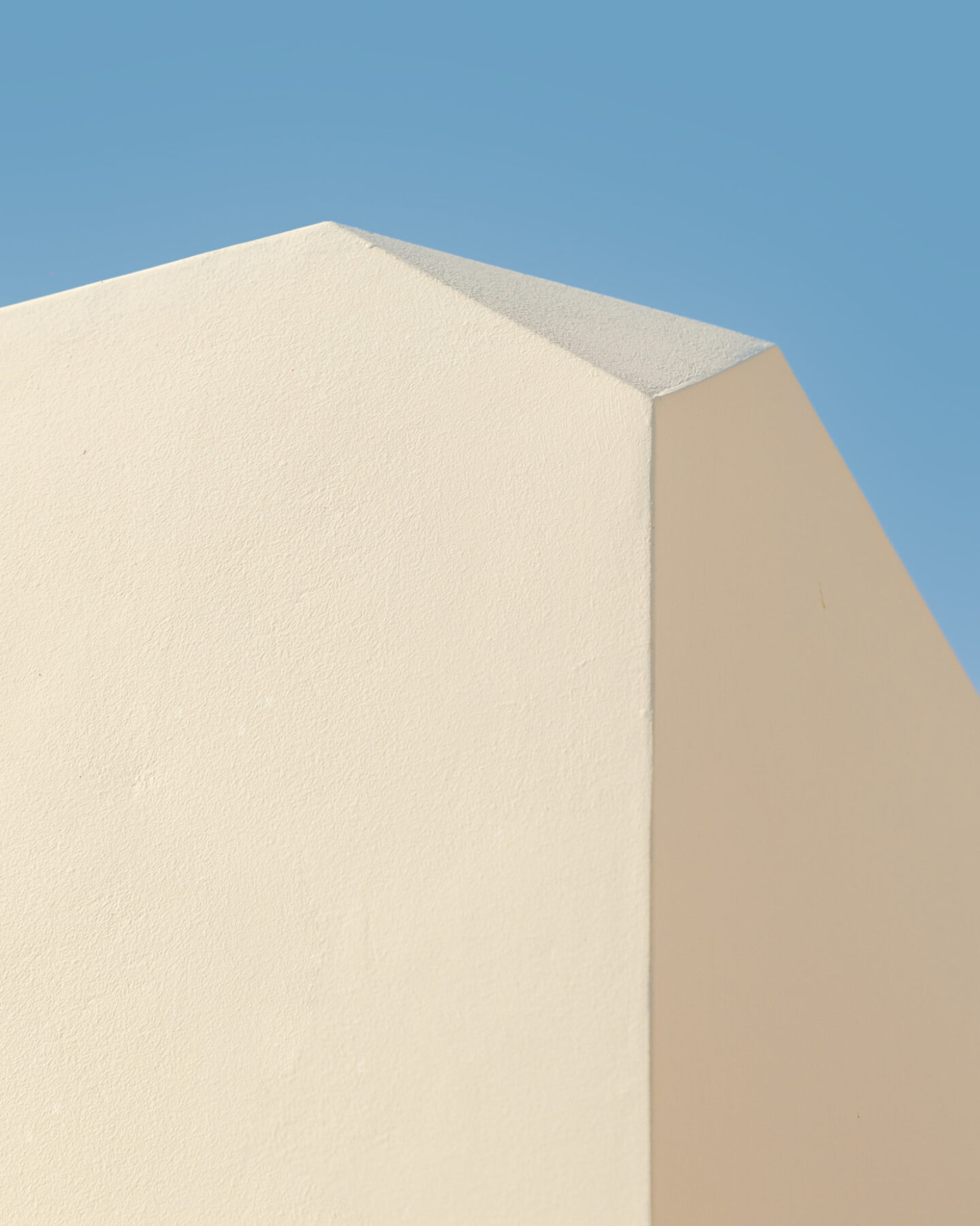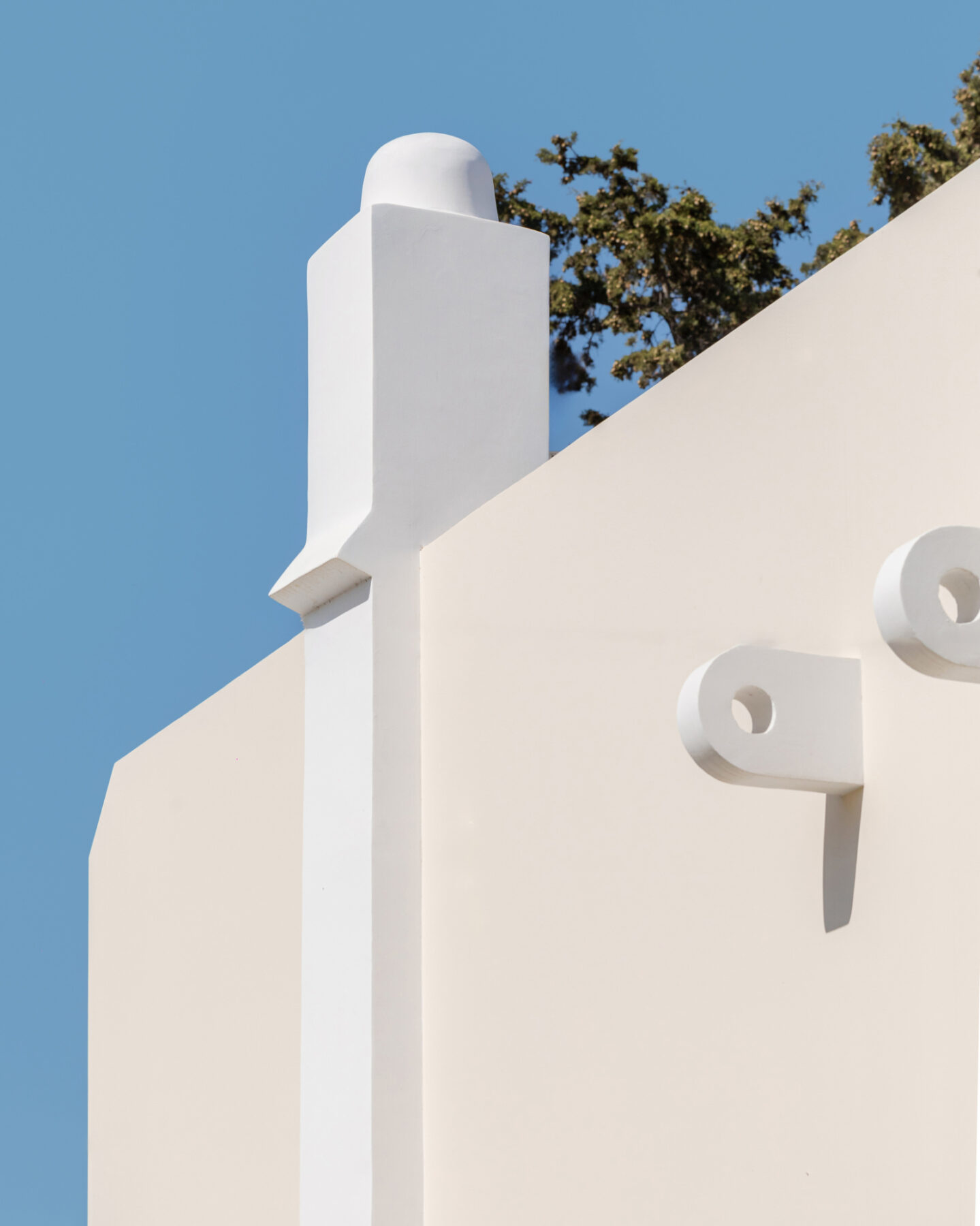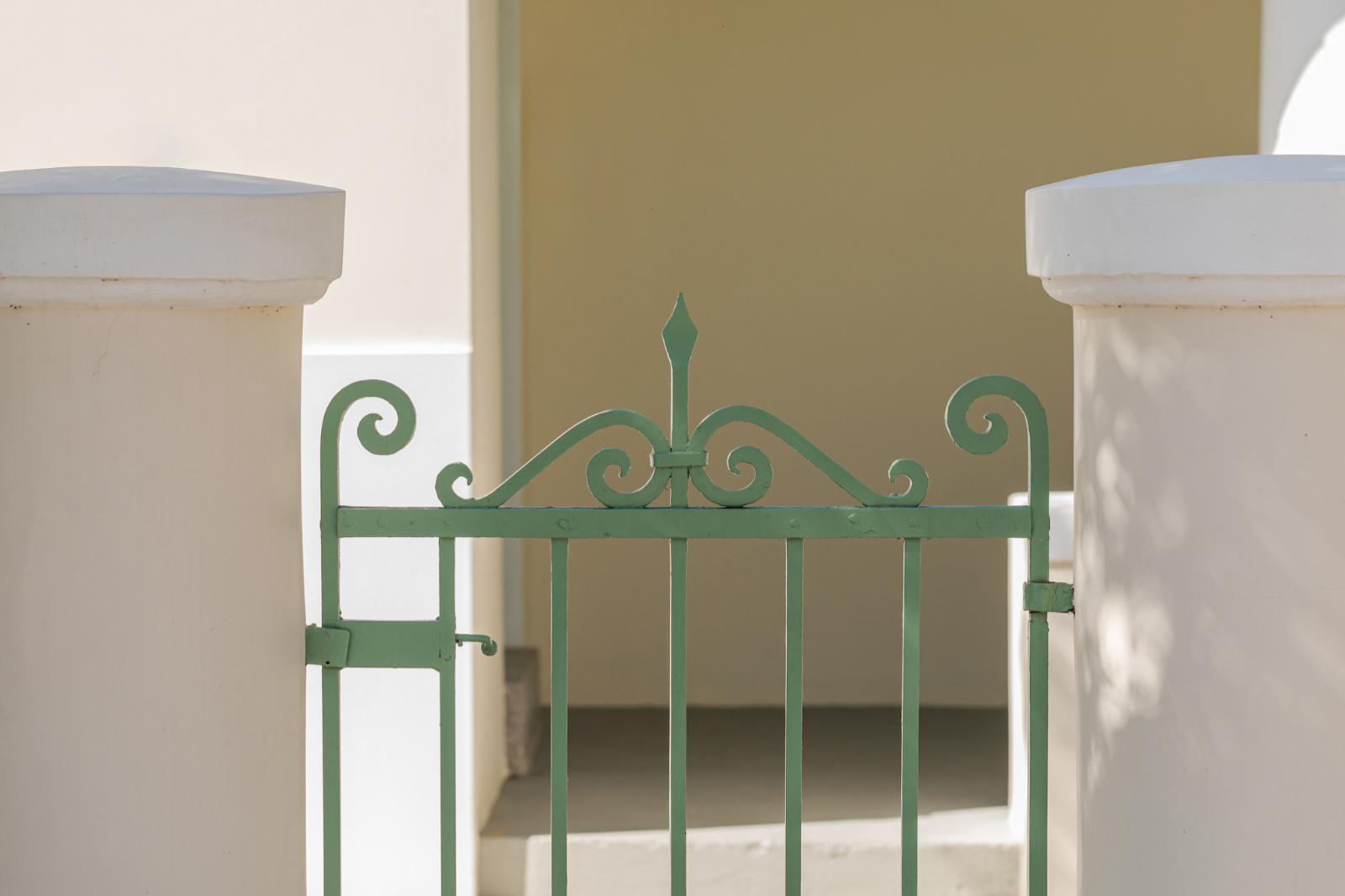Double-arched windows, vintage tiles, light-green windows and decorative details compose the new space (shell and interior) of a historic residence in Kos Island. The architect Maria Nikoli, the civil engineer Christina Politou and the electrical engineer Antonios Thalassinos repair and reconstruct the existing building while designing a new outbuilding in order to adress contemporary needs and desires.
The residence was originally built between 1933 and 1936 on Kos Island, Greece. It is a prime example of Italian architecture in the Dodecanese and one of the few remaining Italian-built folk houses, or “Case Populari”. The style is an example of early modernism that is eclectic in nature. The architecture office achieved to upgrade the residence to contemporary living standards, to elevate the sustainability quotient by 5 levels and to bring the building up to Eurocode 8 standards for earthquake resistance.
Before the Restoration
The building had undergone severe damage and decay, primarily due to a leak in the ceiling slab that caused corrosion to the steel bars in the concrete frame. Meanwhile, human intervention had altered many of the building’s original features, while the condition of others had deteriorated due to natural causes.
Front Facade: Repair
We repaired the front facade, matching the original design. The woodwork was replaced with custom-made designs. We designed a new color palette with white, cream, olive green, and terracotta accents.
Rear Facade: Reconstruction
This facade was altered beyond recognition, compromising the building’s character. To salvage the design, we constructed the double-arched windows, identical to the ones in the front facade.
A new outbuilding
We designed the new building to match the aesthetic character of the old one while also incorporating unique features that distinguish the two. The building functions as both a laundry and storage room.
The arch
An homage to Cycladic architecture, the arch is a distinctive decorative element.
An homage to Cycladic architecture, the arch is a distinctive decorative element. We studied the form, style, and structure of buildings in the 1930s to design it. The arch provides a tranquil retreat into an inner sanctum.
Interiors
The bedroom’s centerpieces are the double-arched windows, with this one overlooking the inner courtyard. This window was a new addition. The vintage tiling is reminiscent of the original 1930s aesthetic.
This corner, embellished with two double-arched windows, is perfect for enjoying a morning coffee. These windows were there originally but had deteriorated, so they were replaced by new, identical ones.
The kitchen window’s dimensions were altered later, even though it remained in its original location, so we redesigned it to match the original size and fit. The mosaic tiles are handmade Italian tiles that match the style of the 1930s era. We designed the kitchen and its cabinets to be ergonomic, with a focus on flexibility and comfort for users. The white door is a new addition, too, and we designed it to match the original aesthetics.
Decorative Details
We took great measures to preserve the unique decorative details of the building.
We took great measures to preserve the unique decorative details of the building. These elements are sometimes subtle and other times striking and scenographic. The woodwork, metalwork, and decorative use of concrete give the building soul. The style blends Modernism with the Mediterranean tradition, borrowing from Italian, Arabesque, and Cycladic architecture.
Facts & Credits
Title Restoration of a historic residence in Kos Island, Greece
Typology Architecture, Design
Location Kos Island, Greece
Status Completed, 2023
Architecture & Engineering Maria Nikoli (Architect, Restoration Lead, Construction Supervisor), Christina Politou (Civil Engineer, Construction Lead, Construction Supervisor), Antonios Thalassinos (Electrical Engineer, Sustainability Studies)
Technicians Mustafa Appas (Master Carpenter), Tasos Samaras (Electrician), Michalis Drosos (Plumber), Dimitris Talaros (A/C Technician), Marios Ritsiardis (Ironworker/ Smith, repairs to the original railing)
Photography Karen Gkiounasian – Architectural Photography
Text by the authors
READ ALSO: ARCHISEARCH PORTFOLIO REVIEWS 2024 _ Νέα παράταση συμμετοχών μέχρι 01 Μαρτίου
